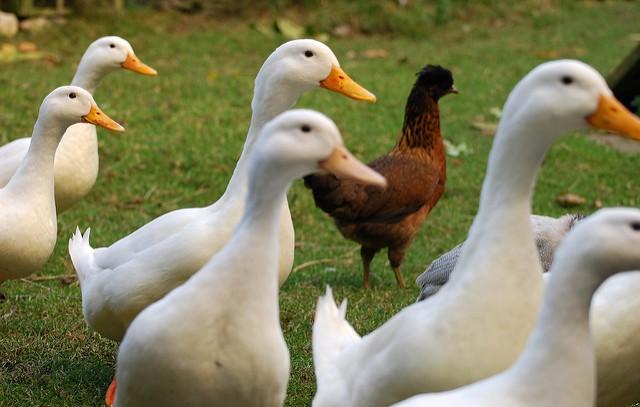A reassortant H5N6 avian flu virus detected in three Asian nations over the past few weeks has been confirmed in an outbreak in the Netherlands.
In other developments, South Korea—one of the countries that has already reported outbreaks from the H5N6 reassortant this season—reported another at a duck farm. And Cambodia reported an H5N1 avian flu outbreak in poultry, its first in nearly a year.
Dutch flock numbered 16,000 birds
The outbreak in the Netherlands was first reported on Dec 8, and government officials had said initial tests from the duck farm near the city of Dronten was likely a highly pathogenic strain. In a notification yesterday from the World Organization for Animal Health (OIE), the country's economic affairs ministry said the outbreak began on Dec 7 at a fattening-duck farm near the town of Biddinghuizen.
The virus killed 40 of 15,985 birds, and the surviving ducks were culled to curb the spread of the virus. Tests revealed the H5N6 subtype is a reassortment linked to H5N8 and not the Asian zoonotic H5N6.
Animal health authorities have established surveillance and protection zones around the farm. Screening at four farms in the 3-kilometer (km) surveillance zone was negative for H5N6.
A report from the country's Wageningen Bioveterinary Research Institute, translated and posted by the infectious disease news blog Avian Flu Diary (AFD), said the farm was one of the first to be hit by H5N8 last season. The institute said initial tests suggest that it is not related to the zoonotic H5N6 strain. The virus' H5 is related to the highly pathogenic H5N8 found in the Netherlands in 2016, and the N6 is related to low-pathogenic viruses previously found in wild birds in Europe.
The Netherlands is the fifth country to report the H5N6 reassortant, which is similar to a virus fist identified in Greece during last winter's extensive H5N8 outbreaks that struck Europe and other parts of the world. The virus is a reassortant of highly pathogenic H5N8 and endemic Eurasian viruses.
In late November, South Korea reported its first outbreak involving the H5N6 reassortant, and the following day, Japan reported a detection in samples from a dead wild swan. A few days later, preliminary tests in Taiwan identified the same reassortant in a sample from a wild bird found dead in a national park.
H5N6 also found in South Korea
In a related development, South Korea's agriculture ministry today confirmed another H5N6 outbreak, this time at a commercial duck farm in the city of Yeongam in North Jeolla province, the country's Yonhap News reported. The ministry said 76,000 ducks were slaughtered at five duck farms within a 3-km radius of the outbreak site to control the spread of the virus.
Officials said the virus is probably highly pathogenic, but more test results to further characterize it are expected.
H5N1 strikes Cambodian poultry
Elsewhere, Cambodia's agriculture ministry reported a highly pathogenic H5N1 outbreak at a local chicken farm in Kampong Chang province, according to a Dec 9 notice from the OIE.
The event began on Nov 22, killing nearly all of the 1,763 chickens at the location. The farm's owner reported the sick and dead birds to provincial authorities on Nov 28. The surviving 24 birds were culled. So far the source of the virus isn't known. Kampong Cham is in south central Cambodia.
The country's previous H5N1 outbreak occurred in January.
See also:
Dec 10 OIE post on H5N6 in the Netherlands
Dec 9 AFD post
Dec 11 Yonhap News story
Dec 9 OIE post on H5N1 in Cambodia






















